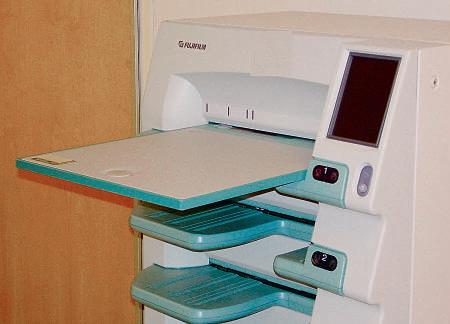
4 minute read
Systemic anatomy
Systemic Anatomy
BoDy sysTeMs
Advertisement
The human body is a structural and functional unit made up of 10 lesser units called systems. These 10 systems include (1) skeletal, (2) circulatory, (3) digestive, (4) respiratory, (5) urinary, (6) reproductive, (7) nervous, (8) muscular, (9) endocrine, and (10) integumentary (in-teg˝-u-men′ -tar-e).
Skeletal System The skeletal system is an important system for the technologist to study. The skeletal system includes the 206 separate bones of the body and their associated cartilages and joints. The study of bones is termed osteology, whereas the study of joints is called arthrology.
The four functions of the skeletal system are as follows: 1. To support and protect many soft tissues of the body 2. To allow movement through interaction with the muscles to form a system of levers 3. To produce blood cells 4. To store calcium
Circulatory System The circulatory system is composed of the following: • The cardiovascular organs—heart, blood, and blood vessels • The lymphatic system—lymph nodes, lymph vessels, lymph glands, and spleen
The six functions of the circulatory system are as follows: 1. To distribute oxygen and nutrients to the cells of the body 2. To carry cell waste and carbon dioxide from the cells 3. To transport water, electrolytes, hormones, and enzymes 4. To protect against disease 5. To prevent hemorrhage by forming blood clots 6. To help regulate body temperature
Digestive System The digestive system includes the alimentary canal and certain accessory organs. The alimentary canal is made up of the mouth, pharynx, esophagus, stomach, small intestine, large intestine, and anus. Accessory organs of digestion include the salivary glands, liver, gallbladder, and pancreas.
The twofold function of the digestive system is as follows: 1. To prepare food for absorption by the cells through numerous physical and chemical breakdown processes 2. To eliminate solid wastes from the body
Fig. 1-2 Skeletal system.
Cardiovascular organs Lymphatic organs
Fig. 1-3 Circulatory system.
Fig. 1-4 Digestive system.
Respiratory System The respiratory system is composed of two lungs and a series of passages that connect the lungs to the outside atmosphere. The structures that make up the passageway from the exterior to the alveoli of the lung interior include the nose, mouth, pharynx, larynx, trachea, and bronchial tree.
The three primary functions of the respiratory system are as follows: 1. To supply oxygen to the blood and eventually to the cells 2. To eliminate carbon dioxide from the blood 3. To assist in regulating the acid-base balance of the blood
Urinary System The urinary system includes the organs that produce, collect, and eliminate urine. The organs of the urinary system consist of the kidneys, ureters, bladder, and urethra.
The four functions of the urinary system are as follows: 1. To regulate the chemical composition of the blood 2. To eliminate many waste products 3. To regulate fluid and electrolyte balance and volume 4. To maintain the acid-base balance of the body
Reproductive System The reproductive system is made up of organs that produce, transport, and store the germ cells. The testes in the male and the ovaries in the female produce mature germ cells. Transport and storage organs of the male include the vas deferens, prostate gland, and penis. The organs of reproduction in the female are the ovaries, uterine tubes, uterus, and vagina.
The function of the reproductive system is to reproduce the organism.
Fig. 1-5 Respiratory system.
Fig. 1-6 Urinary system.
Male Female
Fig. 1-7 Reproductive system.
Nervous System The nervous system is composed of the brain, spinal cord, nerves, ganglia, and special sense organs such as the eyes and ears.
The function of the nervous system is to regulate body activities with electrical impulses that travel along various nerves.
Muscular System The muscular system, which includes all muscle tissues of the body, is subdivided into three types of muscles: (1) skeletal, (2) smooth, and (3) cardiac.
Most of the muscle mass of the body is skeletal muscle, which is striated and under voluntary control. The voluntary muscles act in conjunction with the skeleton to allow body movement. About 43% of the weight of the human body is accounted for by voluntary or striated skeletal muscle.
Smooth muscle, which is involuntary, is located in the walls of hollow internal organs such as blood vessels, the stomach, and intestines. These muscles are called involuntary because their contraction usually is not under voluntary or conscious control.
Cardiac muscle is found only in the walls of the heart and is involuntary but striated.
The three functions of muscle tissue are as follows: 1. To allow movement, such as locomotion of the body or movement of substances through the alimentary canal 2. To maintain posture 3. To produce heat
Endocrine System The endocrine system includes all the ductless glands of the body. These glands include the testes, ovaries, pancreas, adrenals, thymus, thyroid, parathyroid, pineal, and pituitary. The placenta acts as a temporary endocrine gland.
Hormones, which are the secretions of the endocrine glands, are released directly into the bloodstream.
The function of the endocrine system is to regulate bodily activities through the various hormones carried by the cardiovascular system.
Fig. 1-8 Nervous system.
Fig. 1-9 Muscular system.
Fig. 1-10 Endocrine system.









